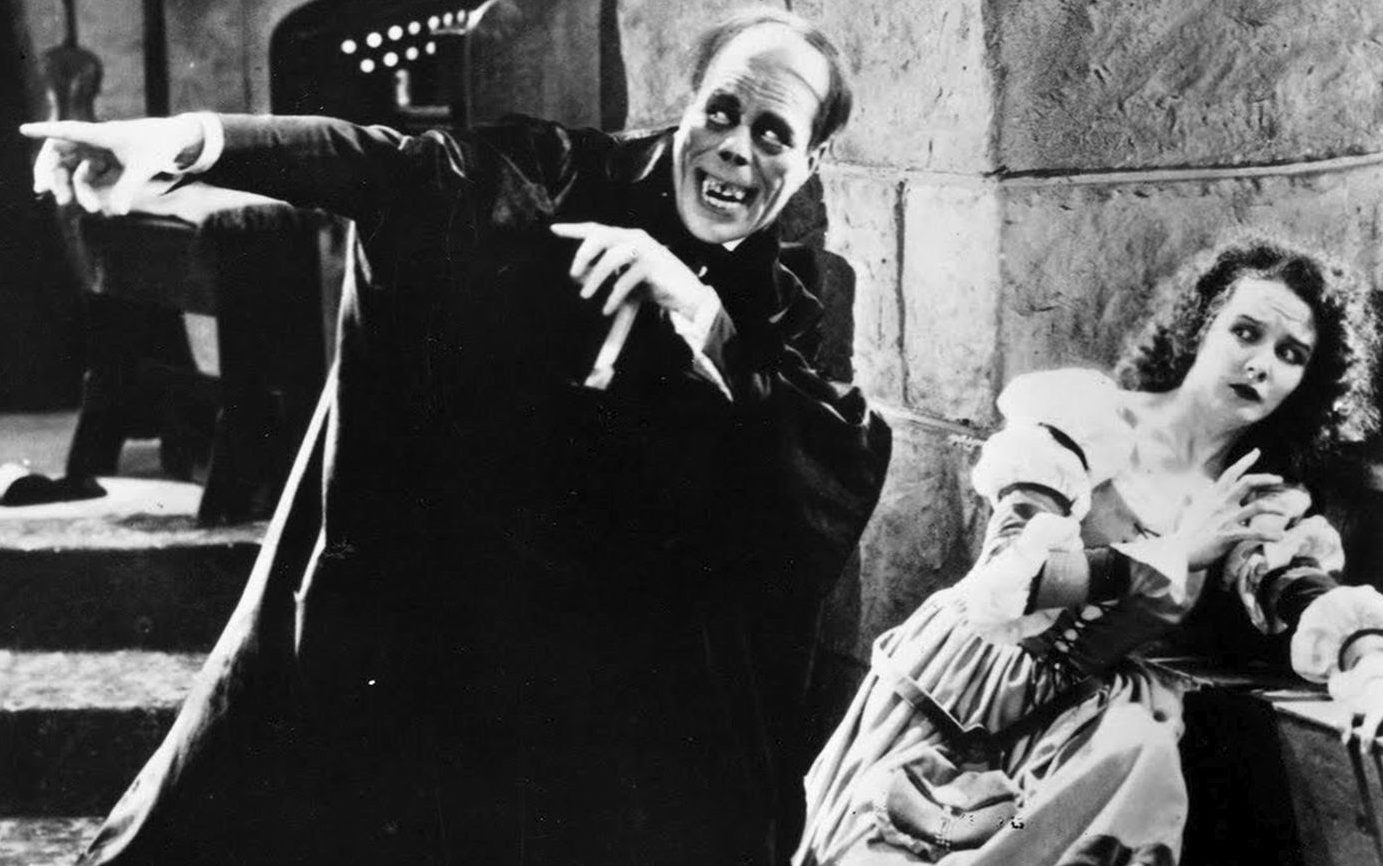For over a century, The Phantom of the Opera has been one of the world’s most famous stories. Gaston Leroux’s 1910 novel has spawned countless film and theatrical adaptations, as well as musicals which have become the basis for many of the later screen adaptations.
In continuing this look back at classic horror films, I will now analyze the first two theatrical movie adaptations of Leroux’s novel. Namely, the 1925 silent version starring Lon Cheney, and the 1943 version starring Claude Rains. Both films tackle the same source material, but are wildly different. Which is the better movie? Note that for the purposes of this analysis, we are only looking at the two movies, and nothing else, including the original source novel and later musical adaptations.
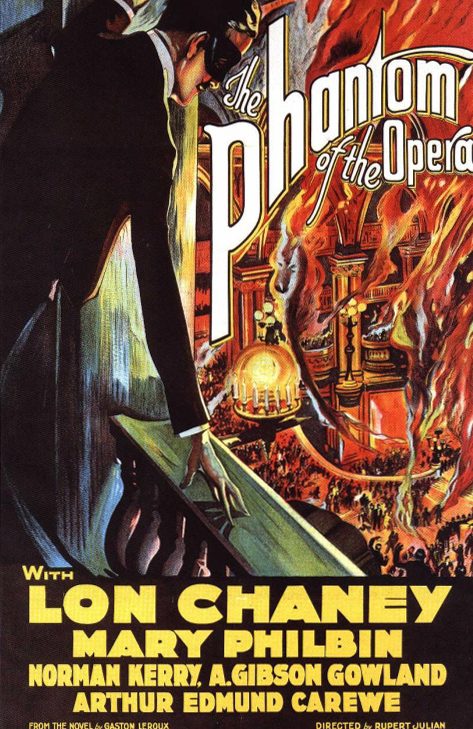
In the 1925 version of the story, the Paris Opera House has recently changed ownership, with the previous owners informing the new ones that they may hear tellings of a “Phantom” beneath the theater’s floors, in the catacombs that the gorgeous building now rises above. Of course, they brush it off as a joke. Christine, an up and coming performer, is being secretly aided and guided in her performances by a mysterious figure that speaks to her from behind the mirror, much to the chagrin of her lover, Raoul de Chagny. When theater owners refuse to give into threats in the form of notes sent by this mysterious figure, Christine goes missing, and meets the Phantom face to face! She is later released in exchange for her becoming his slave, but plots with Raoul to flee Paris and get to safety. Will the two be able to flee in peace, or will this Phantom have other plans for them?
Like many silent films, this one is comprised of monochrome tinted sequences. It is worth noting that while this movie was originally released in 1925, it was re-edited and reissued in 1929 in a more streamlined cut with revised intertitles and some reshot footage (Lon Cheney was not available for the reshoots as he was at another studio at the time). In addition, this version of the movie also colorized the famous “Bal Masque” (Masquerade Ball) sequence. It removed the happy and optimistic ending scene of the 1925 cut. A “sound” version of the movie was released in 1930 which is now generally considered to be a lost film, although surviving excerpts now exist on the most recent Blu-ray Disc release.
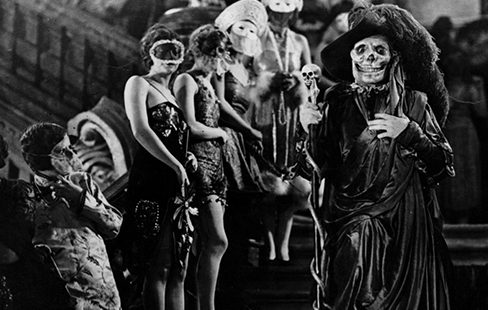
This version of the story impresses with its somber tone, unsettling mood, solid performances from the stars of the day, and of course, Lon Cheney as the definitive Phantom. Cheney designed his makeup himself, creating something truly terrifying and haunting to the theatrical audiences of the day; the studio even made an effort to keep it a secret until audiences went to see the movie! In fact, the look of this film was so solid and spectacular, that a number of sets were reused for the 1943 version.
Much of this film emphasizes the terror of the Phantom, and the dark, eerie catacombs beneath the Paris Opera House. Things like this help it to remain a truly haunting film throughout its duration. The motivations of the characters are believable, but this remains the Phantom’s movie, first and foremost. The suspense is built up just the right amount, and when he is introduced, we are glued to this character and would not have it any other way. The movie has other elements to its plot which are fleshed out just the right amount; this is a perfectly balanced and enjoyable story despite its age.
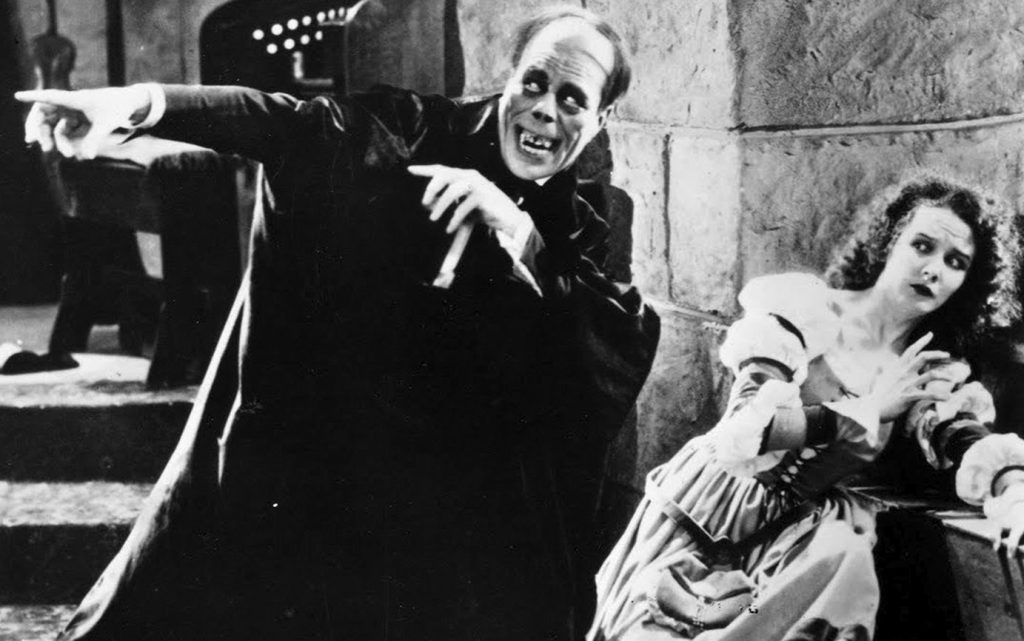
The climax of the movie has its share of suspense and action, and will have the audience all the more gripped and intrigued by the action on the screen. Lon Cheney became legendary in Hollywood for the creation of his own makeup, and perhaps nowhere is this truer than this film. Even with the growing advent of improvements in technology and filmmaking, few Phantoms are as fearsome as Cheney’s.
Do not overlook this movie just because “it is a silent film.” You will be cheating yourself out of a fantastic story that has more than stood the test of time. In fact, with Halloween just around the corner, there is no better time to rediscover this movie, or discover it for the first time!
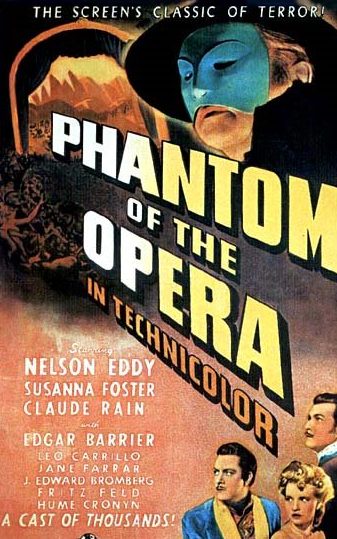
The 1943 version of the story follows a performer in the Paris Orchestra who has been admiring singer Christine from afar, and secretly funding her music lessons. When a medical condition impacts his fingers and he loses his ability to play properly, he attempts to make more money through the selling of a concerto, but upon attacking someone attempting to steal his music, he is disfigured by acid and retreats to hiding beneath the surface of the city. Christine, meanwhile, finds herself conflicted between two separate love interests; a fellow opera singer and a policeman, as well as her career. As Christine continues to pursue her career, the mystery of the Phantom becomes clearer, but are everyone’s lives now in danger?
Did you notice something in that description of the movie? Romantic subplots. A drawn out (and boring!) origin story for the Phantom. Great lengths of a movie that go nowhere and accomplish nothing. An overemphasis on the lavish costumes, colors, and musical numbers. Only about 10-15 minutes at the tail end of the move spent in the dungeons beneath the city. This was an interesting attempt to update the story following the evolution of filmmaking techniques after nearly two decades, but the story, despite now being in color and with full sound, actually falls well flat of its earlier counterpart.
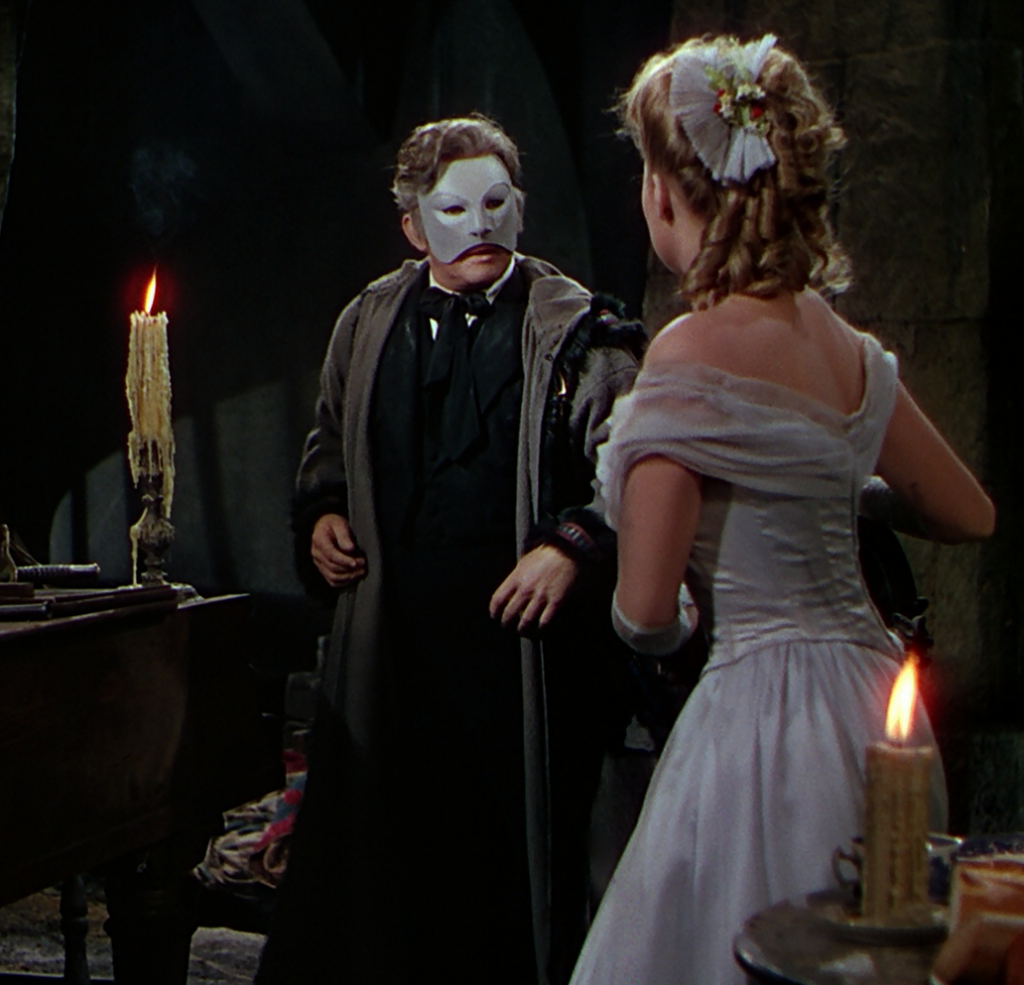
In the Golden Age of Hollywood, every movie seemed to try to outdo every other movie. What resulted from that here are impressive costumes, setpieces, and big musical/operatic numbers on the stage. While these were all certainly a part of the 1925 film, they were never the primary emphasis. The earlier movie’s minimalist approach in this regard worked far better.
Claude Rains is a fantastic actor (he had previously played The Invisible Man in the early 1930s film of the same name, and is perhaps best known to audiences for his role in Casablanca). But he is tragically miscast as the Phantom here. Early in the film he comes across as the sweet, kindhearted grandfather type figure, so when his transformation to the Phantom comes, it is hardly believable. Granted, this is not entirely Rains’ fault; it is clear the writers and filmmakers wanted to take the story in a different direction, and this is as much to blame, if not more so.
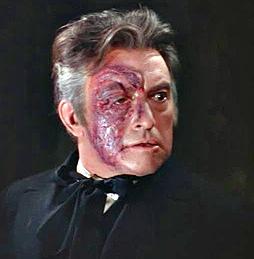
The tone of the film is totally wrong. This movie makes the criminal mistake of introducing a romantic rival for Raoul, and what stems from this is terrible, laughable scenes that feel like they would be better off in a romantic comedy of the era. Funny, I assumed a movie called The Phantom of the Opera would be about, you guessed it, the Phantom.
This is not a great film and it is perhaps better that people remember the 1925 version more fondly. It is worth watching once for the curious, but do not expect it to usurp Cheney’s film from two decades prior.
So, which one is the superior movie? If you have not already been able to tell, this will be a little more “one sided” than the Nosferatu vs. Dracula showdown from last week.
THE BEGINNING:
The 1925 film begins with a shot deep in the dungeons between the Opera House, setting the dark and gloomy tone for the suspenseful film. The 1943 film begins in the Opera House amidst a performance with lavish scenery and colorful costumes and setpieces. It too sets the tone for the rest of the film, albeit not in a good way.
Winner: 1925
THE PHANTOM:
Lon Cheney’s performance in the 1925 film is the stuff of legend, with his makeup severely frightening the audiences of the day. Even today, it is pretty damn scary. We learn just what we need to know about his version of the character and nothing more; he remains a Phantom in nearly every sense of the words. Claude Rains’ character starts the film far too gentle and sympathetic, so his transformation is hardly believable, and the “disfigured” makeup look from being hit with acid is nowhere near as unearthly scary as Cheney’s two decades prior. There is really no competition here.
Winner: 1925
THE TONE OF THE FILM:
The 1925 movie is pretty damn unsettling. We see Cheney unmasked roughly 30 minutes into the film, see him at a masquerade party attempting to steal back Christine, and even abducting her into the shadows late in the film, torturing her lover and his ally. When the 1943 version was being made, the filmmakers made the titular character too sympathetic, added in far too many scenes and characters that do not have an impact on the main plot, and put too much emphasis on the lavish operatic and orchestral numbers and performances. The Phantom of the Opera is a story that demands suspense and a dark tone, and the 1943 film simply does not have that.
Winner: 1925
THE PRODUCTION/SETPIECES:
This is the one area where I can very narrowly give a slight nod to the 1943 version. It is a big film and the filmmakers clearly spared no expense in making the movie. Many sets were reused from the older movie, but this one did introduce many new costumes and some fine looking exteriors and other scenery not seen in the 1925 film. Lon Cheney had better makeup, but Claude Rains had a better mask, which seems to have been more influential on later incarnations of the character. The older film had a better “underground” with more chambers and horrors around each corner beneath Paris, but I will at least give credit where credit is due in this instance.
Winner: 1943
THE CAST/CHARACTERS:
What about the people that are in the movie other than the titular Phantom? The older film keeps its cast to a comfortable minimum; no one feels unneeded or tertiary (though obviously there are extras in scenes that require them). The 1943 movie introduces too many characters, and by that extent, too many subplots. And most of these are completely unnecessary, and change the feel of the movie, most definitely not in a good way.
Winner: 1925
THE PACING:
There are multiple cuts of the 1925 movie, which tend to range in time from 80 to 115 minutes. Yet the scenes move quickly and the movie goes by at a fairly brisk pace, with something always going on. The 1943 movie drags, and drags often, despite only being about 90 minutes in length. While even the 1925 movie is not perfect here, it still remains the better film.
Winner: 1925
THE ENDING:
In the 1943 film, a single gunshot sets off a chain reaction that buries the Phantom in rubble, presumably killing him. It feels like a rushed and rather mundane ending. And we have to endure another comedic romantic sequence after this! In the 1925 version, an angry mob chases down the Phantom, beating him to death, and tossing him into a river in the middle of the night. Honestly, neither is what I would call one of cinema’s truly great endings, but you get the impression in the 1925 version that the titular villain is paying for his misdeeds at the hands of those he has wronged.
Winner: 1925
This is a pretty one-sided argument. You should see The Phantom of the Opera in anticipation of the Halloween season, but be sure it is the 1925 version with Lon Cheney. It is available on Blu-ray Disc with multiple cuts of the movie, enabling you to see how it has changed in later incarnations/releases. Even if you have not seen it or have put it off on account of it being a silent movie, give it a chance. Odds are you will not be disappointed!
All images in this review are the copyright of the respective holders/studios/entities/etc. For promotional purposes only. All rights reserved.

